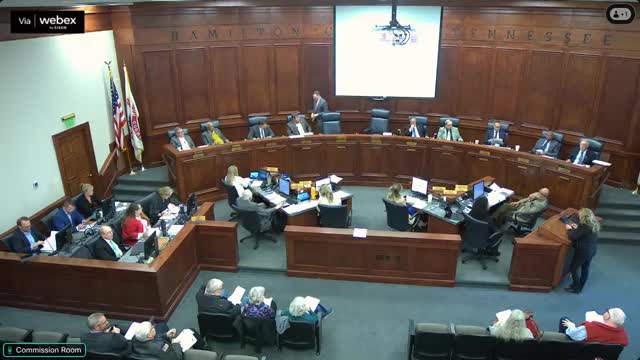Residents Rally Against Controversial Commercial Development Plan
October 17, 2024 | Hamilton County, Tennessee
This article was created by AI summarizing key points discussed. AI makes mistakes, so for full details and context, please refer to the video of the full meeting. Please report any errors so we can fix them. Report an error »

In a recent government meeting, significant concerns were raised regarding proposed zoning changes in the East Brainerd area, particularly the potential for large commercial developments. Residents expressed strong opposition to plans that would allow for 50-foot tall buildings just 25 feet from property lines, especially in predominantly residential zones. Many voiced fears that such developments would exacerbate traffic congestion on already narrow, two-lane roads, which are ill-equipped to handle increased vehicle flow.
The discussions highlighted a specific proposal to rezone a property from agricultural to a mix of residential and commercial use, with some residents advocating for a complete residential designation instead. They argued that the proposed commercial space, which could exceed 100,000 square feet, would not only disrupt the character of the neighborhood but also pose safety risks due to inadequate infrastructure. Concerns were also raised about environmental impacts, particularly regarding flooding and wildlife displacement.
Several residents shared personal anecdotes about the challenges of navigating their daily lives amidst existing traffic issues, emphasizing that the area lacks the necessary infrastructure to support commercial development. They collectively gathered over 250 signatures opposing the commercial aspect of the proposal, advocating instead for residential development that aligns with the community's needs.
In response to the community's feedback, the developer indicated a willingness to adjust the proposal, reducing the commercial footprint and incorporating conditions aimed at mitigating potential negative impacts. However, the sentiment among residents remained largely against any commercial zoning, with many calling for a focus on residential development that would better serve the community's character and needs.
The commission ultimately voted to defer the decision on the proposal until December 18, allowing for further consideration and community input. This meeting underscored the ongoing tension between development interests and community preservation, a theme likely to resonate as the area continues to grow.
The discussions highlighted a specific proposal to rezone a property from agricultural to a mix of residential and commercial use, with some residents advocating for a complete residential designation instead. They argued that the proposed commercial space, which could exceed 100,000 square feet, would not only disrupt the character of the neighborhood but also pose safety risks due to inadequate infrastructure. Concerns were also raised about environmental impacts, particularly regarding flooding and wildlife displacement.
Several residents shared personal anecdotes about the challenges of navigating their daily lives amidst existing traffic issues, emphasizing that the area lacks the necessary infrastructure to support commercial development. They collectively gathered over 250 signatures opposing the commercial aspect of the proposal, advocating instead for residential development that aligns with the community's needs.
In response to the community's feedback, the developer indicated a willingness to adjust the proposal, reducing the commercial footprint and incorporating conditions aimed at mitigating potential negative impacts. However, the sentiment among residents remained largely against any commercial zoning, with many calling for a focus on residential development that would better serve the community's character and needs.
The commission ultimately voted to defer the decision on the proposal until December 18, allowing for further consideration and community input. This meeting underscored the ongoing tension between development interests and community preservation, a theme likely to resonate as the area continues to grow.
View full meeting
This article is based on a recent meeting—watch the full video and explore the complete transcript for deeper insights into the discussion.
View full meeting
